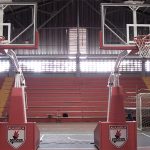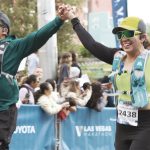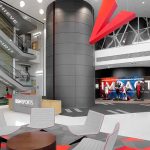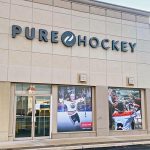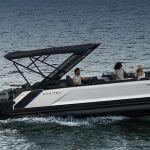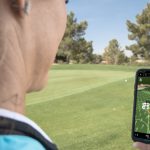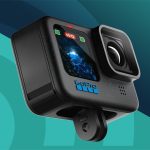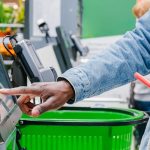Foot Locker Inc. is certainly enjoying the resilient athletic footwear cycle.
Driven by double-digit comp gains and strong expense controls, Foot Locker’s profits vaulted 60.6 percent in the third quarter, to $106 million, or 69 cents per share. Excluding a tax benefit of $9 million, or 6 cents a share, as a result of a settlement of a foreign tax audit, earnings were 63 cents per share, the highest level of Q3 earnings in the company’s history as an athletic company.
Results handily eclipsed Wall Street’s consensus estimate of 54 cents a
share. The 10.2 percent comp store sales gain in Q3 brought its year-to-date gain to 9.9 percent.
On a conference call with analysts, Ken Hicks, CEO, noted that the company has “produced solid results for the last few years in less than ideal economic times.” With many of its merchandising initiatives clicking across most of its banners, Hicks added that management now sees the “potential for an expanded capital expenditure program in the next couple of years” to support the rollout of new prototypes across banners with several finding early success.
But he also called out many key vendors – Nike, Adidas, Converse, Jordan, Asics, New Balance, Mizuno, Reebok and Under Armour that “continue to develop innovative product and great ideas as fast as ever. Our customers remain excited by the stories we're telling and the product assortments they find in our stores and on our digital sites.”
Sales in the quarter climbed 9.3 percent, to $1.52 billion this year. Excluding the effect of foreign currency fluctuations, total sales advanced 11.0 percent.
The comp gain consisted of a 9.4 percent increase in store sales and an 18.3 percent jump in direct-to-customer sales. By month, double-digit comps were generated in the back-to-school months of August and September, followed by a high single-digit comp gain in October. On a two-year stacked basis, comps were steady throughout the quarter in the high teens.
By region, domestic stores comped up low-double digits with only Lady Foot Locker showing a decline, according to Lauren Peters, EVP and CFO.
The top performer again was Kids Foot Locker, up 20 percent. Champs Sports, domestic Foot Locker and Footaction all had double-digit comp gains for the quarter. The gain at Champs came on top of a similar double-digit gain last year for a two-year stacked gain of approximately 30 percent.
Foot Locker Europe saw essentially flat comps for the period. The region started on a positive note in August and sustained that low single-digit gain performance through much of September before October “softened somewhat,” said Peters. Foot Locker Canada posted a high single-digit gain while Foot Locker Asia-Pacific was up mid single-digits.
Sales in its direct-to-customer businesses were up 18.3 percent overall, with its athletic banner dot-coms up almost 50 percent in the aggregate. CCS.com suffered a high single-digit comp decline as it “continues to redefine its place in the very promotional skate category,” said Peters. Excluding CCS, the two-year stacked comp results of its digital business continued to exceed 40 percent.
Among categories, comps across footwear, apparel and accessories were within 1 or 2 percent of the overall 10.2 percent comp.
Within footwear, kids were strongest, posting a gain in the high teens across all of its divisions. Women's footwear was up slightly, as gains across most divisions more than offset the decline at Lady Foot Locker. Within men's footwear, basketball surged more than 20 percent, driven by marque launches from LeBron, Kobe and Rose. Said Peters, “The Jordan brand, including Jordan Classics, is exceptionally strong, with all of the retro shoes selling through very well.”
Basketball is also becoming “increasingly relevant” in Europe, although the gains are coming from Jordan and a variety of classic basketball silhouettes such as the Nike Blazer and Adidas Originals Hard Court rather than NBA star launches.
Running was slightly positive overall, with gains in its US stores and online sites offsetting weakness in Europe where some customers are shifting from running and training to classic basketball court styles.
”The Nike Free is clearly the running shoe of choice for many of our customers,” added Peters. “But technical running shoes from the likes of Asics and Mizuno are doing well as are other Nike running models such as the Flex and Dual Fusion.”
Apparel was up low double-digits, with a solid gain in the teens in the US slightly offset by a small comp decline in Europe. Branded apparel continues to outperform private label.
In accessories, gains were led by socks from Nike, Adidas and Jordan. Hats were also “doing really well, as our customers are literally looking for us to provide them with a complete head-to-toe hookup,” said Peters.
Gross margins improved 60 basis points to 33.1 percent. Occupancy leverage added 100 basis points, offsetting a 30 basis point reduction in merchandise margins. Another 10 basis point decline was due to lower shipping revenue from its direct-to-customer sales.
Peters said the 30 basis point decline in merchandise margin primarily stemmed from Europe, where Foot Locker continued to take additional markdowns in order to keep inventories clean. Added Peters, “That said, our European business remains productive and profitable. And we believe we are taking share in several markets. In fact, our profits in Europe during the quarter were higher than a year ago, even after backing out the $7 million adjustment we took last year related to European vacation accrual.”
In the US, reduced initial markup percentages from its vendors were offset by a lower markdown rate.
SG&A was reduced by 210 basis points to 20.9 percent. Excluding the European adjustment of a year ago, SG&A still improved 160 basis points. Particularly aiding expenses was a reduction in store wage expense due to new tools to manage payroll hours and enhance the associate hiring process.
Inventory increased 3 percent. With overall sales increasing more than 9 percent, Peters said “it is clear that our turns are improving and our inventory is fresh. We feel well-positioned in all of our markets for the holiday selling season.”
Discussion its new prototypes, Hicks said Champs Sports is “furthest along” with the banner’s test stores performing “quite good.” Their performance over the holiday season will determine the final rollout decision but Hicks said management is “optimistic that an accelerated remodel program for that banner will produce significant returns for the business.”
Prototype tests for Foot Locker units in Long Island and New Jersey are “definitely encouraging” in early testing and several more tests are planned over the next two quarters. Pop-up kids areas are being tested inside some Foot Locker locations with “encouraging” early results. New designs for Kids Foot Locker are also being tested.
Regarding Lady Foot Locker, Hicks said that although the comp decline in the quarter was “disappointing,” it wasn’t so surprising given that the chain is shifting its focus to an older, more active women in her 20s and 30s “with a premium assortment of stylish, great-fitting, high-performance athletic apparel, shoes, and accessories.” Fourteen updated Lady Foot Lockers feature a stronger assortment of premium brands from Nike, Asics, Adidas, Under Armour, New Balance and Reebok “that fit the active woman's on-the-go lifestyle.”
A just-announced, new women’s concept, Six. 02, is targeting that same customer though “taking a strong position on fitness and performance that is even more pronounced than the rescanned Lady Foot Lockers.” Three test stores will open by Black Friday.
Hicks cautioned that it “will take some time for the customer to find us and see the compelling product stories we believe we have for her, in both Lady Foot Locker and Six. 02. However, every day we're learning more about how to deliver the shopping experience and merchandise assortment that she wants.”
In Europe, its Locker Room performance-oriented prototype is not yet producing the returns for a full roll-out and management hopes the concept will find more success in testing in less “intense” promotional climates. Overall in Europe, with traffic relatively weak, Foot Locker is heightening its focus on customer conversion and looking to capitalize on the fashion shift toward classic basketball styles.
Regarding the impact of Hurricane Sandy, Hicks said that although no associates were hurt, “many did experience significant, even devastating damage to homes and property, and some remain dislocated.” The Foot Locker Foundation has created a fund to support associates most directly impacted by this storm and donations to the American Red Cross as well as shoe donations to local charities. Hicks thanked the “dedication of so many of our associates who, as soon as the storm passed, went to extraordinary lengths to get to their stores, distribution centers or offices to keep the business running. If not quite at top speed, then as close to it as possible.”
Foot Locker had about 200 stores closed for several days at the peak but “a handful of the stores opened very quickly.” The company doesn’t expect a material impact on fourth-quarter results given Foot Locker’s global footprint. Indeed, month-to-date comps were up mid-single digits with key banners seeing “good, positive momentum” similar to the third quarter. Europe’s comps are down slightly, and Lady Foot Locker is also still running negative.
For the fourth quarter, Foot Locker expects comps toward the upper end of mid single-digits. Gross margin is expected to be up 50 or so basis points on a comparable 13-week basis, in line with recent quarters.

